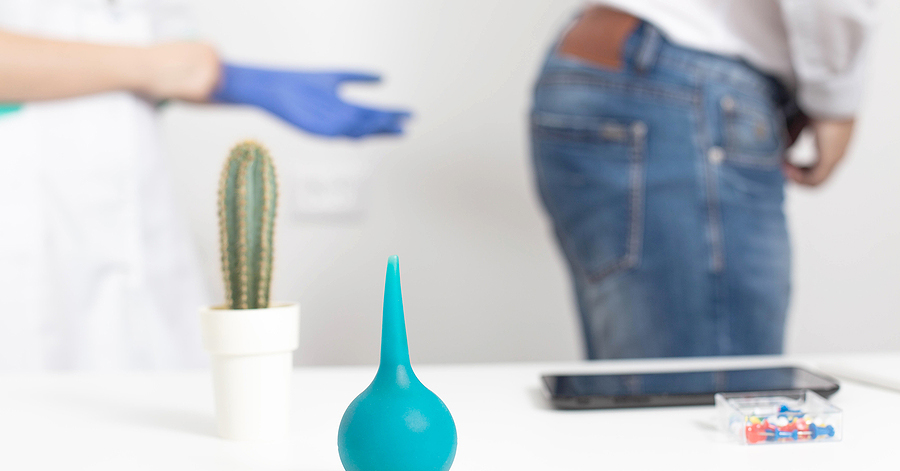Sigmoidoscopy Preparation: What Patients and Practitioners Need to Know

Sigmoidoscopy is a pivotal procedure in detecting colorectal conditions, necessitating thorough sigmoidoscopy preparation to ensure clear visibility, minimize discomfort, and facilitate accurate diagnosis. This article delves into the essentials of preparation, catering to both colorectal surgeons and patients.
Sigmoidoscopy Overview
What is Sigmoidoscopy?
Sigmoidoscopy offers a close examination of the lower part of the colon. Unlike a colonoscopy, which surveys the entire colon, sigmoidoscopy is less extensive, focusing solely on the sigmoid colon. The procedure involves inserting a sigmoidoscope – a flexible tube with a light and camera – through the rectum.
Indications for Sigmoidoscopy
Sigmoidoscopy is recommended for various reasons, such as rectal bleeding, chronic diarrhea, or abdominal pain. It’s instrumental in detecting conditions like ulcers, polyps, and colorectal cancer.
Patient Preparation
Dietary Adjustments
Sigmoidoscopy preparation demands alterations in diet. Patients are advised to avoid solid foods a day prior and to consume clear liquids like broth, tea, and water. Certain liquids, such as those colored red or purple, are to be avoided.
Bowel Preparation
A crucial aspect is bowel preparation. Patients typically use enemas or laxatives, ensuring the lower colon is clear of stool. This preparation, administered the night before and/or a few hours pre-procedure, is vital for visibility.
Medication Adjustments
Patients might need to adjust routine medications. Those on anticoagulants or antiplatelets may require dosage modifications, under the guidance of their healthcare provider.
Mental and Emotional Preparation
Facing a sigmoidoscopy can induce anxiety. It’s essential for patients to communicate concerns and for practitioners to provide reassurance and detailed explanations, fostering a sense of ease and trust.
Practitioner Preparation
Pre-Procedural Assessment
Practitioners play an essential role in sigmoidoscopy preparation. A thorough review of the patient’s medical history and an assessment of potential complications are fundamental steps in ensuring a smooth procedure.
Equipment Preparation
The quality and readiness of the sigmoidoscope and any biopsy tools is a non-negotiable aspect. Ensuring the functionality and sterilization of equipment is crucial for both the success of the procedure and patient safety.
Adler MicroMed offers Disposable Medical Sigmoidoscopy Kits for this procedure.
Communication with Patients
Open communication is foundational. Practitioners should clearly explain the procedure, address queries, and alleviate any concerns, thereby establishing a rapport and easing patient anxiety.
Establishing a Comfortable Environment
Creating a comfortable environment involves room setup, temperature control, and patient positioning. These considerations contribute significantly to patient comfort during the procedure.
During the Procedure
What Patients Can Expect
Patients might experience mild discomfort and pressure, but the procedure is generally well-tolerated. Understanding that the duration is relatively short, usually 15 to 20 minutes, can also help alleviate anxiety.
Practitioner’s Role
Practitioners must be vigilant in monitoring the patient’s comfort, adeptly maneuvering the sigmoidoscope, and, if necessary, taking biopsies, all while maintaining communication with the patient.
Post-Procedure Considerations
Immediate Aftercare
Post-procedure, vital signs are monitored, and any discomfort or cramps are managed. Patients are typically observed for a short period before being discharged.
Results and Follow-ups
The practitioner will interpret the findings and discuss the results with the patient. If biopsies are taken, additional time is needed for analysis, and follow-up appointments or further tests may be scheduled.
Patient’s Recovery
Patients can usually resume a normal diet and return to daily activities promptly, with guidance on monitoring for any complications such as bleeding or abdominal pain.
Benefits and Risks
Advantages of Sigmoidoscopy
Sigmoidoscopy stands out for its ability to detect conditions early, its minimal invasiveness, and the short recovery time, making it a valuable tool in colorectal health.
Potential Risks and Complications
Though generally safe, sigmoidoscopy is not without risks. Complications such as perforation, bleeding, and reactions to sedatives, though rare, are possibilities that practitioners discuss with patients.
Frequently Asked Questions
Common Queries from Patients
Patients often inquire about the level of pain during and after the procedure, the time taken to receive results, and any restrictions post-procedure.
Practitioners’ Responses
Addressing these queries with detailed explanations and reassurance underscores the safety and efficacy of the procedure, fostering confidence in patients undergoing sigmoidoscopy preparation.
Conclusion
Summary of Sigmoidoscopy Preparation
Thorough sigmoidoscopy preparation is vital for both patients and practitioners, contributing to the success of the procedure and early detection of colorectal conditions. It underscores the significance of a collaborative approach in healthcare.
Encouragement for Open Communication
Fostering open communication and addressing concerns builds trust, easing patient anxiety, and highlighting the commitment of practitioners to patient well-being in sigmoidoscopy preparation.
In summary, both patients and practitioners play integral roles in sigmoidoscopy preparation, ensuring the procedure’s success and upholding the highest standards of colorectal healthcare.
For practitioners, see our Disposable Sigmoidoscopy Kits to see if our devices will work well for your practice.